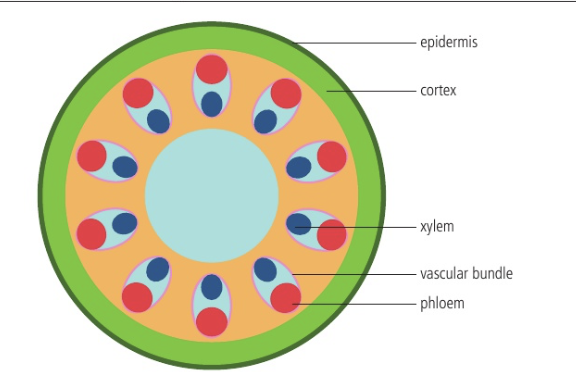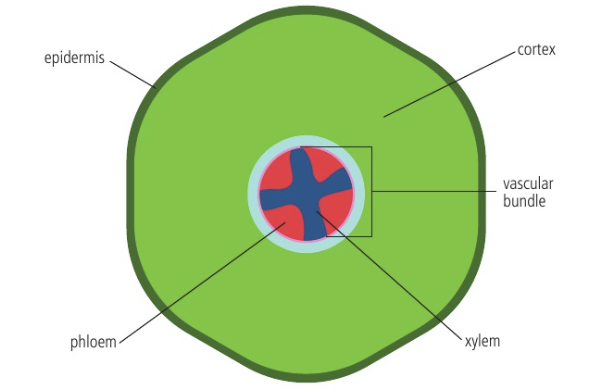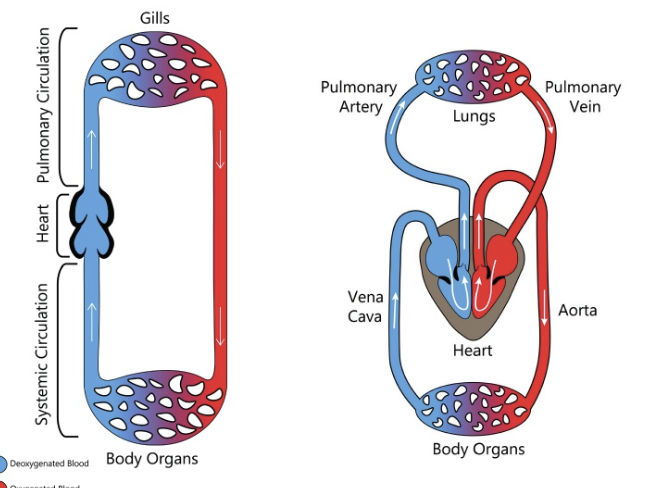Biology (organisms)
1/170
There's no tags or description
Looks like no tags are added yet.
Name | Mastery | Learn | Test | Matching | Spaced |
|---|
No study sessions yet.
171 Terms
lineaus concept
Species are organisms with similar or shared morphological characteristics
binomial nomenclature
Genus +species
biological species
organsism that are able to breed and produce fertile offspring
n of human and chimp chromosomes
humans have 46 , chimps 48
karyogram
a visual representation of homologous chromosomes ordered by size
theory of chimps and humans
believed that humans evolved from chimps, chromosome 12 and 13 of chimps fused to form human chromosome 2
evidence:
placed end to end are similar in size
telomeric DNA found wihtin human chromosomes
satelite DNA found in centromeres, found within chromosome 2 at the position of chromosome 13
whole genome sequencing and uses
when they can view an organisms full genome sequence
can be used to study evolutionary relationships and also for personalized medicine, administering right dose and formula, limiting effects and maximizing treatement
what organisms is the biological species concept difficult to apply to
organisms that can reproduce asexually and organisms that undergo horizontal gene transfer
dichotomous key
a series of yes or no questions based on morphological traits that can be used to determine species
DNA barcoding and uses
Genome sequences are given a BIN, which is put into a database. Environmental DNA can be taken and tested in the database for what species are present
can work as indicator for pollution due to some organisms being very sensitive
levels of classification
kingdom, phylum, class, order, family, genus, species
phylogeny
study of evolutionary past
clade
group of organisms with common ancestry
cladistics
study of evolutionary relationships based on genetics and shared traits
primitive traits
traits that evolved early on
derived traits
traits that evolved more recently
moleuclar clock
a technique where it can be predicted how how ago organisms evolved using, DNA hybridization,
take DNA of two 2 organisms and fused them together, see how many differences, can estimate how long ago they evovled form each other
cladogram
shows the divergence of clades, using amino acid and genetic sequences
parts of cladogram
clade
root; the first common ancestor that all evolved from
node: the point of speciation
terminal branch: last speciation
reclassification
figwort family: plants put into this classification based on morphological features, later found not to be related
3 domains
Archaea, eubacteria, Eukaryota
properties of gas exchange surfaces
thin, moist, large SA, permeable
how are gradient maintained in blood
dense network of blood vessels and continuous blood flow
adaptations to mammalian lungs
extensive branching of bronchioles
extensive capillary beds around alveoli
many alveoli providing large SA
what happens during inhalation
diaphragm contracts, moving down, pressure decreases and volume increase, causing air to enter. internal intercostal muscle relax, external intercostal muscle contract
what happens during exhalation
diaphragm relaxes, decreasing volume and increasing pressure, air moved out of lungs, external intercostal muscles relax, internal intercostal muscles contract
different types of measurements for lung volume
tidal: volume in and out at rest
inspiratory volume: volume of air that can be added after tidal
expiratory volume: volume of air that can be exhaled after tidal volume
vital: the volume exhaled after a maximum inhalation
leaf structure
waxy cuticle
upper epidermis
palisade mesophyll
vein: phloem, xylem
spongy mesophyll
stomata
guard cells
lower epidermis
waxy cuticle
covers the surface and prevents uncontrolled and excessive leaf water loss by evaporation
upper epidermis
secretes waxy cuticle
palisade mesophyll
cylindrical cells densely packed with many chloroplasts to maximize sun light absorption
spongy mesophyll
few chloroplasts but space between allowing large SA for gas exchange
lower epidermis
small cells on lower surface of leaf that secrete waxy cuticle
stomata
openings that control gas exiting and entering, and water loss
what is transpiration
evaporation of water from open stomata
effected by:
light intensity
temperature
humidity
wind speed
how to measure stomata density
n of stomata/ area in view
functioning of haemoglobin
has 4 iron groups which is where O2 can attach, when an O2 binds it increases affinity for O2, making it easier for the next one the bind
CO2 can also bind to alloasteric site causing a conformational change, decreasing the affinity for O2
adult haemoglobin
2 alpha and 2 beta polypeptides, lower affinity for oxygen, higher affinity for BPG, which competes with O2
foetal haemoglobin
2 alpha and 2 gamma polypeptides, high affinity for O2
what are capillaries
smallest of blood vessel, connecting veins and arteries for exchange of materials
adaptations of capilaries
large SA due to being highly branched
thin walls
small inside diameter
adaptations fo arteries
arteries are responsible for bringing blood away from heart
blood under high pressure, requires thick walls to withstand pressure
walls filled with elastin and collagen, with surge of blood fibres can stretch to accommodate pressure
once blood surge is complete they can recoil, propelling blood forwards
smooth muscle
adaptations to veins
veins are responsible for delivering blood to the heart
blood pressure is very low and slow-moving
has valves to prevent backflow of blood
surrounding muscles contract opening valves and pushing blood forward.
walls are highly flexible
where can you measure pusle
neck: carotid artery
wrist: radial artery
occlusions of coronary artery
blockage in the coronary artery delivering blood to cardiac muscles
can be due to build up of cholesterol or other substances causing plaque, preventing flow of blood
can result in heart attack due to lack of oxygen to cardiac muscles
transport of water during transpiration
when water leaves through stomata during transpiration, due to cohesion and adhesion, water moves in a continuous flow, from roots to shoot, pulling water molecules up towards transpiring tissue
adaptations of xylem
xylem is a dead hollow cell responisbel for transport fo water
walls are with lignin; provides stability and rigidity to withstand pressure
pits to allows for lateral movement of water
Draw and label a transverse section of the stem

draw and label transverse section of the root

tissue fluid + lympatic system
fluid that is created through pressure filtration in the arterial side, due to high pressure, smaller molecules and plasma escape into spaces between capillary beds, can exchange with cells, on the venule side where low pressure, tissue fluid can re-enter the capillary bed
the tissue fluid that cannot enter back into capillary beds, enters the lymphatic system, where it is filtered and eventually returned back to the bloodstream
double circulatory system vs single (diagram)

in the double ciruclatory system , blood regains pressure when it reaches the heart, to provide enough pressure to send blood through body
motile organism adaptations
organisms that move from one from to another actively
brown throated three toed sloth:
very slow moving organisms
once a week drop to ground and drop to gorund to defeacate, leavin gbehind half of muscle mass
three long toes adapted for hanging
sessile organisms adaptations
sessile: stationary cant actively move from place to palce
venus fly trap:
soil deficient in minerals
trap has shrot trigger hair when something lands, it closes to prevent it from escaping
sacromere
actin (thin) and myosin (thick) filaments, that slide over each other, muscles are made up of many sacromeres
how do sacromeres move
myosin heads are phosphorilated causing. change in position of the heads, —> attarcted and attach to binding site on actin filament, forming cross bridges, phosphate released) —> as ADP is released, mysoin bends due to loss of energy, bending occurs towards the centre of sacromere and actin moves inwards —> myosin binds to ATP allowing myosin heads to dettach from actin
titin and its role
titin is a spring like protein attached to the myosin z line, preventign overstreching of sacromere and recoiling
antagonistic muscles + example
muscles that accomplish opposite movements
external and internal intercostal muscles:
during ihalation: internal muscles relax and external contract moving ribcage up
tendons
connective tissue between muscle and bone
synovial joint
when theirs 2 bones that need to move against each other and require a large range of motion
components of synovial joint + example
cartiledge: covers both to protect bone to bone contact
synovial fluid: lubricatign fluid that reduces friction
ligament: encircles joint to keep bones in place
tendon: coonnects muscles to bones
femur and pelvis
locomotion
ability to move from one place to another
adaptations for swimming in marine mammals
for example dolphins:
streamlined shape; minimum drag in water
nearly no body hair: limit drag
tail has fluke: up and down motion to move forward
lsot real legs.
blowhole for air
can stay under water for long periods of time—> deep dives
adaptations of mammalian heart
· cardiac muscle
· Pacemaker: also known as the SA node: sends electric impulses controlling cardiac cycles
· ventricles: work to pump blood into the arteries: thick muscle
· atrium: receives blood from veins at low pressure thin muscle wall
· coronary vessels: work to provide oxygenated blood to the cardiac muscle
· semilunar valves/pulomary valves: prevetn back flow of blood into ventricles
How does the cardiac cycle work
· controlled by the SA node (pace maker)
· SA node sends action potential/ impulse to atria, causing them to undergo systole, pushing blood into ventricles—> Impulse reaches AV node which sends it own action potential down purkinje fibres and bundle of his, surrounding the ventricle, casuing them to undergo systole, pushed into arteries
generation of xylem root pressure
if water needs of plants are insufficient, through active transport their can be movement of ions into the root hairs —> decreasing water potential —> drawing water into root hairs
hierarchy of subsystems starting with cells
cells —> tissues —> organs —> body systems —> organisms
emergent features
features that exist only due to the accumulation of all different components
An example of integration between endocrine and neural signalling
epinephrine production:
sensory neurons transmit to CNS that epinephrine is needed —> ANS sends impulse to Adrenal gland to produce epinephrine
what does the brian act as
as a place for processing, storing and reciving information
components of Nervous system
CNS
spinal chord
what is spinal chord responsible for
integrated centre founconcious processes
grey and white matter, most occurs in the grey matter
series of events from receptor to effector
sensory receptor recives a stimulus gathers info —> sensory neuron —> CNS or spinal chord —> motor neuron —> effector organ
what are nerves
bundles of nerve firbes surrounded by a protective sheath, containing sensory adn motor neurons
reflex arc
involuntary and rapid response to stimulus
receptor —> sensory neuron —> inter neuron —> motor neuron —> effector organ
cerrebelum
coordination centre for muscle contrations
balance, posture, things that require muscle memory
melatonin
hormone that control circadian rhythm; sleep and awaek cycle/patterns
inhibited by light
promotes drowsiness, sleep
uses sensory neuron in the eye
epinephrine use + effects
used for vigorous activity, icnreasing O2 and glucose contents
hydrolyzes glucose
increases ventilation rate
increases blood flow
control of heart rate
SA and AV node are connected to the medulla
chemoreceptors; located in aorta and carotid wall sense pH,
low pH, means high CO2 concentration
increase HR
baroreceptors: sense BP in aorta, located in walls of blood vessels
control of ventilation rate
monitored by chemoreceptors in the brainstem
if CO2 is high in blood stream, pH low, ventilation increases to remove CO2
If CO2 is low in blood stream, pH high, ventilation decreases
peristalsis + which parts of digestion are controlled and not
muscle contracts that move food through digestive tract
controlled by CNs and consciously: defectating later in life, swallowing, chewing
controlled by ENS, involuntary: peristalsis and defecation early in life
what is tropism and what types are their
tropism: growth in response to stimuli
positive: towards the stimuli
negative: away from stimuli
positive phototropism
growth towards light, requires their to be rapid growth on side in shade in order to grow towards light
phytohormones
signalling chemicals responsible for growth, development and response to stimuli
auxin
a phytohormone responsible for tropism
cells must coordinate in order to gather auxin in high concentrations, to where it needs to be
use of auxin efflux carriers: transmembrane proteins that pump auxin into cell
auxin works by activating pumps that pump h+ across, allowing thier the be a decrease in pH, more acidic —> weakening of cell wall bonds, allowing for elongation
cytokinin vs auxin
auxin: works from shoots to roots
cytokinin: works from roots to shoots
they work together in order to ensure equal growth of root and shoot
fruit ripening
occurs through ethylene, which is a hormone in a gaseous state
it ripens fruits —> which consequently produces more ethylene further ripening fruits —> as it is a gas also effects neighbouring fruits
pathogens
disease causing organisms
primary defense system
skin, mucus act as barrier
how does blood clotting work
platelets gather at open wound —> form a plug —> release of clotting factors —> convert prothrombin to thrombin —> converts fibrinogen (insoluble) to fibrin (insoluble) —> forms mesh/net at wound —> trap red blood cells, platelets, plasma —> forming blood clot
innate immune system
immune system immune system you’re born with recognises self and not self, what youre born with
adaptive immune system
immune system that develops over life time from exposure to pathogens
phagocytes
white blood cells capable of amoeboid movement, when an antigen is encountered it engulfs it through endocytosis —> enzymes in lysosome breaks down pathogen (non specific)
B- Lymphocytes
Produce antibodies
bind to antigens, to be recognised to be broken down (forms clumps recogized by phagocytes)
what could presence of antigens possibly lead to + blood example
The presence of antigens may stimulate antibodies to be produced
if erythrocyte with antigens are put into blood stream, antibodies will be produced causing clumping of blood
how do t helper cells work
they work by signalling to b lymphocytes to produce antibodies
happens as T helper cells recognize antigens on pathogen, activating to helper cells, producing cytokines which consequently causes b lymphocytes to produce antibodies
cloning of B lymphocytes
Once B-lymphocytes are activated, they undergo mitosis to clone themselves, producing b-plasma cells. These b-plasma cells then secrete large quantities of specific antibodies.
immunity
adaptive ability to produce antibodies to fight off infections
memory cells and immunity
B-cells differentiate into memory cells, which remain in the bloodstream (and lymphatic system). Upon secondary exposure to the same pathogen, memory cells quickly recognize the antigen and trigger a rapid, stronger immune response
transmission of HIV
Human immunodeficiency virus
transmitted through bodily fluids
unprotected sex
sharing hypodermal needles
transfusion of blood
birth/breast feeding
what is HIV and how does it work
destroys T helper cells, which limit the B cells activated, limiting antibodies produced —> more vulnerable to pathogens
HIV develops into AIDS, where their is 0 ability to produce antibodies —> cannot fight any infections or diseases anymore